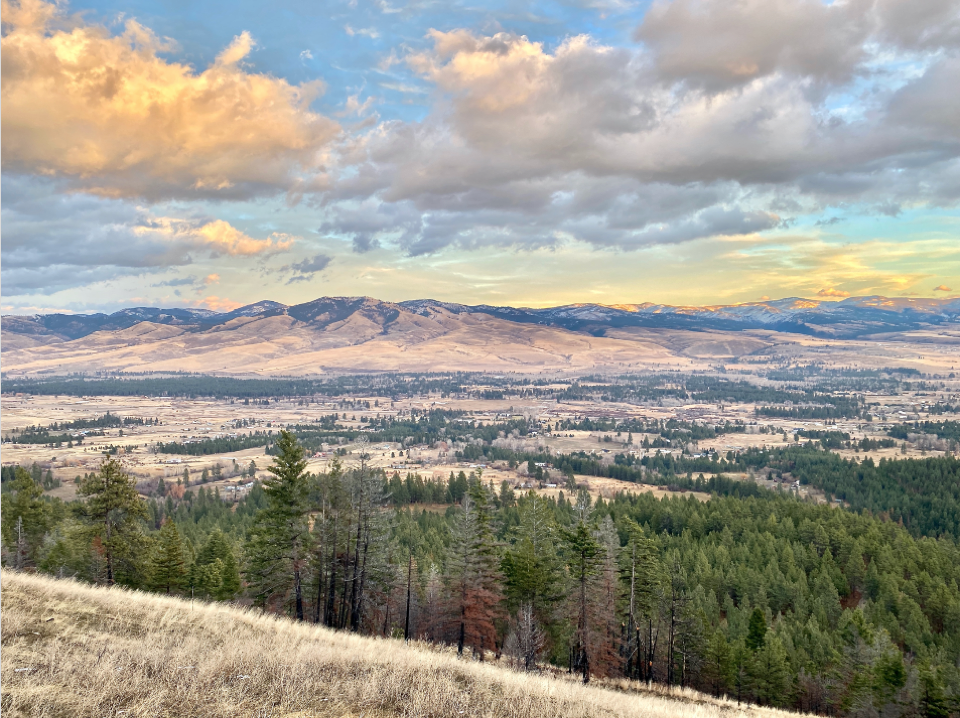
Winter Raptor Surveys in the Bitterroot Valley
Block title
 By: Eric RasmussenAvian Scientist
By: Eric RasmussenAvian ScientistAvian Ecology
We seek to understand how birds use the habitats available and how that will change as we work to create more diverse plant communities. We also host researchers that document migrations of raptors and songbirds across MPG.
In this section of the research pages, you will find links to reports and updates from all the researchers involved with avian ecology, posted chronologically. The links will show you more in-depth reports on our findings. The three main projects covered here are:
Songbird Counts- A grid of sampling points covers MPG with 560 points. We visit each point 3 times a year, once in winter and twice during the songbird breeding season. We record, by ear or by sight, all the birds near that point for 10 minutes.
Songbird Banding- The University of Montana Bird Ecology Lab, UMBEL, runs several trapping stations at MPG as part of their regional songbird monitoring program. UMBEL sets up very fine nets that are nearly invisible to birds in brushy habitats. Songbirds fly into the nets and become entangled. The researchers take the birds from the nets and affix a numbered band to their leg before releasing them.
Raptor Research- The Raptor View Research Institute monitors raptor populations on MPG and counts raptors that migrate past MPG in the spring and fall. Raptor View researchers have placed transmitters on osprey and golden eagles that use the Bitterroot Valley.
A rough-legged hawk uses a utility pole to rest, scan for prey, and keep an eye on other raptors or predators.
The Bitterroot Valley hosts a robust population of winter raptors, many of them visible on utility poles or isolated trees in rural portions of the valley. Some may breed here and stay year-round, others might explore the valley as part of their nomadic wanderings, and some raptors may take a direct flight here just for the winter. Whatever the case, there is something that attracts them to the Bitterroot Valley.
In 2011, we set out to document the annual winter presence of raptors from Lolo to Stevensville, Montana. Which raptors, and how many, spend winters here? Do they prefer certain areas, habitats, or fields? And what changes might we see over time?
Rough-legged hawks breed in arctic Alaska and Canada and winter in open areas across southern Canada and the northern United States.
I found it quite challenging to count raptors while driving compared to being the child passenger of my youth. We chose our routes with many factors in mind, but safety was the highest priority. Safe pull-outs along rural roads, having a good view, and surveying different habitat types were some of our considerations. I've since ditched my pocket-sized childhood bird journal, scrawled with tick marks next to each species. Instead, I use an iPad app that allows me to enter each raptor's precise location on a real-time map.
A map from our 2019-2020 winter raptor surveys shows the distribution of raptors along our routes. We drive the same roads every two weeks, from mid-November through mid-March. A purple background appears where there are high concentrations of raptors.
A common theme of raptor "hotspots" is open space on working private lands—a disappearing environment. We are no strangers to the rapidly changing landscapes in the Bitterroot Valley (or Western Montana, for that matter). I can spot a raptor perched on a fence post and turn around to see new developments on what used to be a field full of cow patties, voles, and raptors.
A cow grazes alongside two red-tailed hawks.
Another common theme is the conversion of open space into housing developments.
After ten years of conducting surveys, I am astonished by the perseverance of raptors. I am no less encouraged by the landowners. All the ranchers that I've spoken with have stories about the eagles, hawks, and falcons that use their land. They often point to a favorite perch for the local red-tail, tell me how a particular nest faired through a harsh winter, or mention the time of year when eagles congregate along the wooded edge of a field. I nod, acknowledging the patience, skill, and practice involved in observing the world around us. And though I am not a rancher, I can relate to how stories take shape by getting to know a place, a valley, or a 70-mile raptor route.
Baldy Mountain and MPG Ranch sit open in the background of Florence, Montana.

About the AuthorEric Rasmussen
Eric received a B.S. in Resource Conservation from the University of Montana in 2000, and soon after volunteered for his first bird research job in the arctic tundra of Alaska. Afterwards he worked for nine years, mostly in western Montana, on bird-related research projects for the U.S. Forest Service.
In 2010, Eric was hired by MPG Ranch as the Bird Research Technician and now conducts breeding bird surveys, raptor migration surveys, and winter bird surveys, as well as participating in other ranch projects such as owl and raptor banding and community field trips. In his free time, Eric enjoys searching for wild mushrooms, playing ultimate Frisbee, and backcountry skiing.
In 2010, Eric was hired by MPG Ranch as the Bird Research Technician and now conducts breeding bird surveys, raptor migration surveys, and winter bird surveys, as well as participating in other ranch projects such as owl and raptor banding and community field trips. In his free time, Eric enjoys searching for wild mushrooms, playing ultimate Frisbee, and backcountry skiing.

























